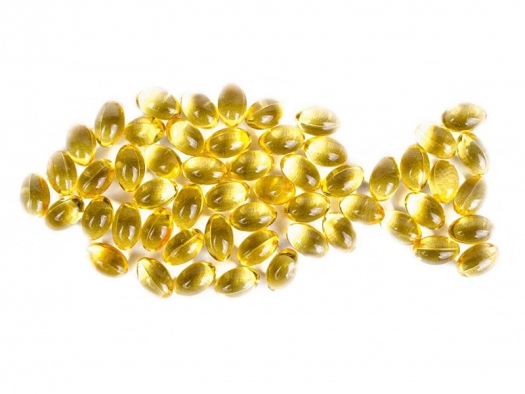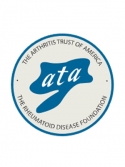Jonathan Wright, M.D. says: Say goodbye to most arthritis pain for good in eight steps or less
FishOilGelsInFishShape.jpg

Photo by PublicDomainPictures / Pixabay License
In the March 2003 issue of Nutrition & Healing, you read about different ways to protect your heart – a topic not making many headlines these days, but one that’s still critical to your health. In this article, I’ve chosen another topic that you’re also not hearing much about lately (except in drug ads), even though it probably affects many of you on a daily basis: arthritis.
I’ve seen just how debilitating this condition can be. And although there are plenty of patented prescription and over-the-counter arthritis medications available, judging from the fact that arthritis is still one of the primary complaints of patients who visit the Tahoma Clinic, it’s obvious that those options are only masking symptoms temporarily. They’re just not designed to correct the underlying problems that are causing your pain. So let’s take a comprehensive look at the various natural alternatives that might allow you to throw out those patent medicines once and for all.
The first thing to determine is which type of arthritis you have. There are two major forms of arthritis, degenerative arthritis (also known as osteoarthritis) and rheumatoid arthritis.
- Osteoarthritis is the most common form of the disease and occurs when the cartilage between the joints begins to break down and wear away, causing pain and stiffness.
- Rheumatoid arthritis involves inflammation, pain, and stiffness of the lining of joints in your body and also causes redness and swelling in most cases.
If you aren’t sure which form of arthritis you have, your doctor can help determine that. Although both types have very different causes, some of the natural treatments for each type overlap. But let’s start with osteoarthritis.
Osteoarthritis
The arthritis triggers that could be growing in your garden
The first thing I recommend for osteoarthritis is changing certain aspects of your diet. In the 1950s, Norman Childers, Ph.D., found that eliminating certain vegetables (known as nightshade vegetables) from the diet could completely eliminate arthritis symptoms in many cases. Nightshade vegetables include tomatoes, potatoes, peppers (including paprika, but not black pepper), eggplants, and tobacco. According to Dr. Childers, nightshade sensitivity isn’t an allergy but actually a progressive loss of the ability to metabolize substances known as “solanine alkaloids,” which are found in all nightshade vegetables. Unfortunately, there’s no test that can tell you if your arthritis will respond to a nightshade-free diet. It’s strictly a “try it and see” situation.
It’s harder than it might seem to completely eliminate nightshades. Tomato and potato make their way into a wide variety of food products, and pepper gets around a lot, too. Check your local library or contact the Arthritis Nightshades Research Foundation for a copy of Dr. Childers’ book, variously titled (depending on the edition) Childers’ Diet or Arthritis -- Childers’ Diet to Stop It and similar titles. The information he includes can be a big help in searching out all sources of nightshades. But even eliminating the most common nightshades (the ones listed above) is definitely worth trying. Eliminate them for at least three to four months and see if it makes a difference in your symptoms. If you’re not sure after three or four months, you can do a “nightshade challenge” by eating lots of tomato, potato, and peppers. If the pain comes back after the challenge, you’ll know that you are nightshade-sensitive and you should eliminate those foods from your diet permanently.
Sometimes, osteoarthritis is aggravated by “regular” food allergies. If you have a personal or family history of allergies, it’s worth having this possibility checked out. For a list of physicians in your area who can help you with allergy screening, contact the American Academy of Environmental Medicine. There are various ways to determine specific food allergies, but skin testing is not usually an accurate tool in this case.
The alternative treatment so effective it’s becoming mainstream
Once you’ve determined whether or not allergies or sensitivities play a role in your arthritis, you can move on to other natural therapies, starting with glucosamine. By now, even mainstream medical doctors have heard of glucosamine. Research shows that it works by helping to stimulate the growth of new joint cartilage. This is probably why there’s usually a three to four week delay after starting treatment for pain relief to begin. I recommend 500 milligrams of glucosamine sulfate three times a day.
There have been some warnings in mainstream medical publications that glucosamine might affect blood sugar control. If you have significant osteoarthritis and don’t have diabetes, this theoretical possibility shouldn’t be a problem. If you do have diabetes, checking your blood sugar will tell you whether the glucosamine has enough of an effect to warrant not taking it. In most cases, the improvement you’ll likely feel will far outweigh the possibility of any slight effect on blood sugar.
Glucosamine is often combined with chondroitin in natural arthritis formulas. But there’s enough question about chondroitin and risk of prostate cancer for me to advise all men to avoid chondroitin at this time. Besides, I’ve observed that glucosamine usually works just as well by itself. So just use “plain” glucosamine until this question is settled for good.
Complete arthritis relief in less than one month
The next natural osteoarthritis remedy on the list is niacinamide. Even many natural medicine doctors have forgotten, or never learned, just how useful niacinamide (not niacin) can be for controlling the pain and swelling of osteoarthritis.
In 1949, William Kaufman, M.D., Ph.D., published his exceptionally careful and comprehensive research about niacinamide and osteoarthritis titled The Common Form of Joint Dysfunction: Its Incidence and Treatment. Unfortunately, Dr. Kaufman’s research came out around the same time that patented cortisone formulas were being heavily promoted, so niacinamide treatment was hardly noticed. But even though it never made much of a stir, niacinamide treatment works very well. I recommend using 1,000 milligrams of niacinamide three times a day (it doesn’t work as well if you only take it once or twice daily). You’ll probably start feeling results in three to four weeks. Many osteoarthritis sufferers achieve complete relief of pain and swelling as long as they continue on with niacinamide.
Niacinamide doesn’t appear to re-grow cartilage, so it’s best to use glucosamine along with it. If you have diabetes and are concerned about glucosamine’s effects on blood sugar, niacinamide is a good companion for it. Niacinamide also has many benefits for blood sugar problems, and using it with glucosamine is even more likely to relieve your osteoarthritis symptoms.
And a caution: on rare occasion, people who take this amount of niacinamide get low-grade nausea, queasiness, and sometimes vomiting. Although this only happens in less than 1 percent of people who take niacinamide, if you experience any of these problems, stop taking it immediately. The nausea should go away promptly, but check with your doctor before any further niacinamide use.
Rheumatoid Arthritis
The first line of relief for rheumatoid arthritis
Now let’s move on to rheumatoid arthritis (RA). As I mentioned earlier, some of the following recommendations are the same as those for osteoarthritis, but there are a couple of distinct differences.
First, attention to diet is very important to rheumatoid arthritis control – even more so than in cases of osteoarthritis. I’ve observed improvement in every case of rheumatoid arthritis with elimination and desensitization of food allergy, and not just elimination of nightshade vegetables. Milk and dairy are almost always major allergens in people with this form of arthritis and have even been the subject of mainstream medical research into RA (which showed that eliminating milk and dairy worked to alleviate symptoms). But even though dairy is usually a primary culprit, there are always multiple allergens aggravating rheumatoid arthritis. Find and work with a doctor skilled and knowledgeable in food allergy as well as nutritional medicine; a good place to start is with a member of the American Academy of Environmental Medicine (AAEM).
But while food allergy elimination and desensitization improve rheumatoid arthritis, sometimes dramatically and always noticeably, it doesn’t cure the problem.
A common culprit contributes to rheumatoid arthritis
Over the years, multiple studies have reported a high incidence of stomach malfunction (specifically, low levels of hydrochloric acid and pepsin) in individuals with rheumatoid arthritis. These reports also revealed that just replacing the “missing” hydrochloric acid and pepsin without making any other changes-can significantly improve many cases of rheumatoid arthritis.
So with this in mind, I always ask individuals suffering from rheumatoid arthritis to have a gastric analysis done. (It’s important to use the proper procedure in doing the test. Unfortunately, there isn’t enough space here to thoroughly explain it, but for more information, see my book Why Stomach Acid is Good for You.) In the majority of instances, the test discloses low stomach function (low acid).
If this is the case for you, consider supplementing with either betaine hydrochloride-pepsin or glutamic-acid hydrochloride-pepsin before meals.
I usually recommend starting out by taking one capsule (5 to 71/2, or 10 grains). After two or three days, if there are no problems, use two capsules in the early part of the meal; then, several days later, increase the amount to three capsules. The dose is gradually increased in this step-like fashion until it equals 40 to 70 grains per meal.
You’ll probably need to work with a doctor on this aspect of rheumatoid arthritis, too. On rare occasion treatment with hydrochloric acid can be dangerous, so it should only be used when testing indicates a need. Though problems occur rarely, they can be bad ones.
Hydrochloric acid should never be used at the same time as aspirin, Butazolidin, Inodicin, Motrin, or any other anti-inflammatory medication. These medications themselves can cause stomach bleeding and ulcers, so using hydrochloric acid with them increases the risk.
Fish oil and its cousins – an arthritis relieving family reunion
Fish oil: Here it is again, and it’s even more important in rheumatoid arthritis than osteoarthritis. Many research studies have shown that the anti-inflammatory omega-3 fatty acids contained in fish oil significantly reduce the inflammation and pain of rheumatoid arthritis. Generally, I recommend taking 1 tablespoonful of cod liver oil with 400 IU of vitamin E (as mixed tocopherols) twice daily.
Plain fish oil, such as cod liver oil, on its own is often very helpful, but some individuals have found that particular fish oil “fractions” such as DHA (docosahexaenoic acid) and EPA (eicosapentaenoic acid) can be even more helpful. If you want to try these, I still recommend backing them up with that “plain” fish oil; for example, take 2,000-3,000 milligrams of DHA (DHA capsules always contain EPA as well) along with I tablespoonful of cod liver oil and 400 IU of vitamin E each day.
Another closely related option is eicosatetraenoic acid (ETA). ETA was originally derived from mussels and is a close relative of DHA and EPA. It’s an antiinflammatory fatty acid and has been very well studied in Australia. You might have heard it called by the brand names Lyprinol and Lyprinex. Some rheumatoid arthritis sufferers have found that 50 milligrams of ETA three times daily noticeably lessens their inflammation. ETA can be a bit hard to find; try your local natural food store first, and if you can’t find it there, you can get it online or through the Tahoma Clinic Dispensary. (Although I am affiliated with the Clinic Dispensary, I am not associated with the manufacturers of ETA.)
The final five ingredients in the rheumatoid arthritis-relief recipe
Rounding out the list of natural rheumatoid arthritis relievers are the following:
Ginger. You can use this tasty spice in your cooking and take it as a supplement as well. If you have rheumatoid arthritis, use as much ginger in your cooking as you can and also take 1,000 milligrams of ginger three times daily. Unless you’re allergic to it, there’s no downside to ginger, and it’s usually a significant help.
Zinc and copper. These minerals are helpful individually for rheumatoid arthritis, but since prolonged use of one can lead to insufficiency or deficiency in the other, it’s best to use them together (although not necessarily in the same instant). Take 30 milligrams of zinc (from picolinate or citrate) two to three times daily and 2 milligrams of copper (from sebacate) two or three times daily. (Take the three doses a day if your arthritis is more severe.)
Selenium. Garlic and onions are the only common foods high in selenium, so if you’re not allergic to them, include plenty in your diet – along with the ginger. And I also recommend supplementing the onions and garlic with 200-500 micrograms of selenium daily. But don’t overdo it; it is possible to overdose at quantities of 1,500 to 2,000 micrograms daily.
Niacinamide. Although it’s not a primary treatment for rheumatoid arthritis as it is for osteoarthritis, niacinamide can be particularly useful for “ankylosed” joints-meaning ones that have been partially or completely stiffened and immobilized by long-time rheumatoid arthritis. After several months of regular niacinamide use, most cases of ankylosed joints gradually regain mobility. I’ve seen a few ankylosed joints become more mobile again after a year or more of continuous niacinamide treatment, and many more regain at least partial mobility.
Natural arthritis relief: No news can still be good news
Regardless of which type of arthritis you’re battling, you don’t have to wait around for the next patent medicine news flash to find relief. All of the items discussed in the preceding pages work safely and naturally to relieve arthritis pain. I’ve been recommending them for years and have witnessed far more successes than anything the patented formulas have achieved!
Add some oil to those rusty joints
I’m sure you’ve noticed that fish oil is one of my favorite recommendations. There’s good reason: Omega-3 fatty acids may have replaced folic acid as America’s No. l dietary deficiency/insufficiency. And fish oil is the best source for your body to get the omega-3s it needs.
Make sure the brand you use is “certified heavy metal free,” but aside from that, fish oil-always taken with vitamin E-has practically no hazards. (That infamous “cod liver oil burp” can almost always be eliminated by “burying” the oil in the middle of a meal, by blending the oil with rice, almond, or soy milk, and a banana, or by taking it with a “high-lipase” digestive enzyme.)
For osteoarthritis, take 1 tablespoon of cod liver oil (with 400 IU vitamin E) once daily – twice daily if you have a particularly bad case.You can take it right along with glucosamine and niacinamide, as they all work in different ways for different aspects of the problem.
The warning that’s not on the back of your Advil bottle
If you have arthritis and have taken aspirin, Motrin, Advil, or another non-steroidal anti-inflammatory medication (NSAID) for several months or more to relieve your pain, you probably need supplemental copper.
Before they can become effective and offer any sort of pain relief, NSAIDs must first form a “complex” with molecules of copper already present in your body. So it’s important to replace the copper that’s literally been “used up” by these medications.
But, as [you’ve read above], it’s also important to balance supplemental copper with zinc.You should consider having your levels of each tested to determine what balance of zinc and copper is right for you.
And, of course, before you begin taking any new supplement, it’s always best to discuss your plans with a physician skilled and knowledgeable in nutritional medicine.
Originally printed in Nutrition & Healing. Subscription available from Reader Services Department, 819 N. Charles St., Baltimore, MD 21201. Subsequently published by The Arthritis Trust of America®.
The Rheumatoid Disease Foundation / The Arthritis Trust of America was dissolved in 2020 and all website content was transferred to the Foundation for Alternative and Integrative Medicine.



